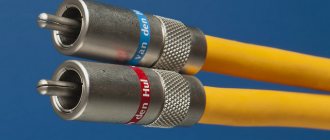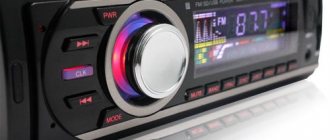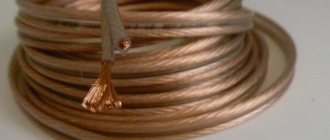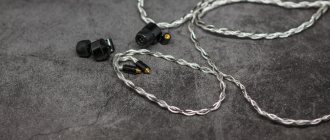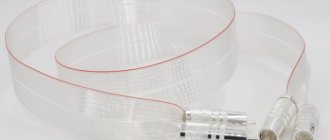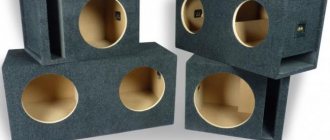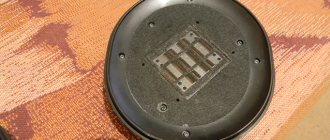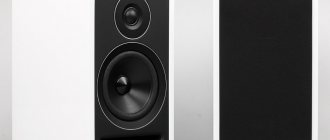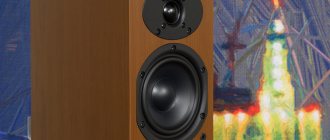The cables that became the subject of our test partly fall into the budget segment, but there are also quite expensive models. Therefore, the purpose of the test was not primarily a comparison, but an overview of the market situation.
Criteria for evaluation
This test was intended as a test of budget interconnect cables, but during the selection process the range expanded a little - now it is increasingly difficult to correlate the price of a cable with what it will turn out to be like in practice. This applies to both expensive models and models with a moderate price tag. Therefore, it was more interesting not to compare the cables, but to find out what they are in general. And the test methodology itself is the same as in the case of much more expensive models - running-in, blind testing and testing in different paths in order to find out the individual characteristics of each test subject as accurately as possible (as much as possible).
Straight Wire Musicable 2 (2100 RUR/1 m)
Design
A thin, soft cable, cut into very small, but tight, spring-loaded connectors, plated with gold. The direction is indicated on the cables themselves; the channel markings are quite normal. Inside, the cable has a symmetrical design, the conductors are made of copper, plus there is a screen.
Sound
Slightly light, quite light sound, but the sound is melodic, united and melodious. The dynamics are generally very good, the detail is not the highest, but against an overall balanced background this is not so noticeable - the sound is just a little simpler than we would like. In terms of the sound of different parts of the range, there is a slight emphasis on the upper frequencies, but there is no sharpness as such.
A cable with a somewhat simplified sound, but quite honest
The midrange is smooth, the bass itself is small, but with good control. The stage is not entirely proportional - wide and shallow. The air feels moderate. The sound does not change much on different recordings, but the handwriting remains recognizable. In general, it is a cable with a somewhat simplified sound, but quite honest, without pronounced distortions or a bright character of its own. And although there are shortcomings, they are distributed more or less evenly among the components. For its segment, it’s a good and fairly versatile option.
Actually to the point
With this article I do not criticize engineers in any way, I just notice the problem and quietly suggest where it came from, and tell me what is actually going on in the cable.
I won’t go into all the processes of how the cable works now. I know from experience that a fellow “stubborn engineer” is capable of at least somehow, after several weeks, months, or even sorry reincarnations, changing his “knowledge” about only one process from all their diversity, at a time.
Therefore, in this case, I will only hint that there are several complex signal transmission processes in the cable, such as:
1. The transmission of the electrical component of the “sine wave” and the transmission of the electromagnetic component that arises in the conductor under the influence of an electric current in it, occurring in different proportions depending on the size of the cable and the composition of its dielectric, combined into a common indicator called characteristic impedance.
A “stubborn engineer” will, of course, say that this process occurs only at high frequencies. But when you try to demand from him the numbers and the color of the cover of the textbook where he read it, the uncle will start swearing.
2. The cable also contains standing waves, which require special coordination of the parameters of the signal source and receiver. To which the “stubborn engineer” will again state that this is only at high frequencies. But, as mentioned above, you should not demand from him “the color of the textbook cover.”
3. The cable has parameters of electrical capacity, electrical inductance, and DC resistance. Here, of course, the “stubborn engineer” will also ask for frequencies and values.
And we will analyze one of them, namely the electrical capacity of the cable, in this article!
The “stubborn engineer”, of course, has already prepared a chant addressed to us, about the fact that the values there are so small... but we’ll figure it out anyway!!!
Audioquest Golden Gate (2600 RUR/1 m)
Design
Thin, moderately stiff and slightly springy cable. The connectors are very miniature and lightweight, the contact surfaces are gold-plated. The cable is braided into a single unit and only bifurcates at the ends, so you can only connect those devices where the right and left channel connectors are located next to each other. There are markings, although they are not very noticeable. conductors - copper core, dielectric - polyethylene foam.
Sound
Expressive, slightly bright sound. Emotionality, dynamics and richness are clearly present. The detail is low, and the dynamics are a little smoothed out, but there is enough richness in the sound, and the scale is not at all intimate. There is some smoothing at the frequencies at the edges of the range, but otherwise the result is more or less smooth and confident. Complex recordings may lack dynamics; with small and medium-sized compositions, the result is more confident and cohesive.
Expressive, slightly bright sound
The stage is of medium width, deep, airy, but the images are rather dense and contrasting. Considering the character and features, perhaps a good result will be obtained when used in a path with a harsh but formal sound in the case when you want to add emotional richness to the sound. and genre preferences should be taken into account. The option is not the most suitable for orchestral classical music, but there should be no problems with most other genres.
Preface
It often happens that we think that we have information in our heads about a particular phenomenon, while in fact it is not there, but due to some “operational thinking” we believe that if it is not there, then and there is no phenomenon.
I will illustrate this phenomenon with an example that seems to me the most important, although it is not about electronics.
One evening, one of my friends had the right mirror on his car torn off. He decided that he could get home... And he could. True, during the 30-minute trip he once got a scratch all over the right side, and the second time he got a dent all over the front passenger door. Then for several months he spoke very positively about how it happened, and even now no, no, but in my presence, once or twice a year he will tell.
Here is how it was. Under normal conditions, before changing lanes to the right, a person looks at the lower right corner of the door; if he doesn’t see a car there, it means the road is clear and he can change lanes, and he changes lanes. In the conditions of a torn off mirror: a person looks at the lower right corner of the door, if he does not see a car there, then the road is clear and he can change lanes, and he also changes lanes. The only difference is that in the second case he does not see the car for a slightly different reason... This is how our vision reflexes work, with a quick glance we do not see the world around us, we see only the target. And the fact that the outside world is not there, because there is no mirror there, easily slips past our consciousness.
Here I must say that I also periodically notice such peculiarities of thinking in myself; moreover, sometimes I also actively think about it. Moreover, they taught me how to figure it out at university, and at school they also told me that “you don’t need to remember all the formulas and values, you need to know how to derive them.”
Black Rhodium Twist (2700 RUR/1 m)
Design
A thin and very flexible cable, cut into small connectors with gold-plated contacts. Channel markings and connection direction markings are available. Structurally, the cable is a little unusual - the conductors are made of tinned copper and each is insulated with rubberized silicone. Thus, two independent and unrelated conductors come out of each connector. And just for convenience, they are all connected by a pair of heat shrink rings. The design does not have a screen.
Sound
Neat, light and melodic sound with very good detail and legibility of aftertones. And the dynamics are at a decent level. At the same time, the sound is quite smooth throughout the entire range, with virtually no noticeable distortions. The upper frequencies are neat and legible, the mids are open and uncolored. And the bass is not bad both quantitatively and qualitatively. In general, the picture turns out to be full-bodied, but not heavy. On the contrary - dynamic, musical, detailed.
High frequencies are neat and legible, the mids are open
The scene is proportionally correct with good drawing of contours, images and plans, airy and light-moving. on complex recordings everything is almost as good, there is no loss of harmony or detail, except that the sound sometimes becomes a little distant. Of course, the result may vary in different systems, but in general it is much higher than expected.
Good nutrition is the key to success
The amplifier connection procedure begins with the power wires. Wiring is the most important element of a car audio system; the volume and sound quality depend on it. Amplifiers need a stable power supply, otherwise the power will not be enough and the sound will become distorted. To understand why you need to pay attention to the quality of wiring and how it affects the sound reproduced by a loudspeaker, you need to know what a music signal is.
Some suggest that it represents a sine wave, however, the musical sinhala is characterized by a large difference between the normal and peak value. If sharp signal bursts are not important for car speakers, then in the case of an amplifier the situation is completely different. If the signal exceeds the permissible power for even a second (or even a millisecond), then these “anomalies” will be audible even to those who cannot boast of a good ear for music.
If the car amplifier is connected properly, the signal will flow through the wires undistorted. Carelessly done work or incorrectly selected wire cross-section will result in the sound being more compressed, rough and sluggish. In some cases, wheezing may also be clearly audible.
How to choose a wire cross-section?
Wire is the most common metal with a certain level of resistance. The thicker the wire, the lower the resistance of the wire. To avoid sound distortion during large voltage fluctuations (for example, when playing powerful bass), you must install the correct gauge wire.
It is worth noting that the cross-section of the positive cable should not be larger than the negative one (the length does not matter).
An amplifier is considered to be a rather electrically intensive device. For its effective operation, high-quality grounding is necessary so that it is possible to receive the necessary energy from the battery. To choose the correct wire cross-section, you need to make some calculations. First, look at the instructions for the amplifier (or directly at the box from the manufacturer, if there is no documentation, use the Internet) and find the rated power value (RMS) there. Rated power is the signal power an amplifier can deliver over an extended period of time to one channel of 4 ohms.
If we consider four-channel amplifiers, they usually have a power of 40 to 150 watts per channel. Let's say that the amplifier you purchased produces 80 watts of power. As a result of simple mathematical operations, we find out that the total power of the amplifier is 320 W. Those. How did we calculate this? It’s very simple to multiply the rated power by the number of channels. If we have a two-channel amplifier with a rated power (RMS) of 60 W, then the total will be 120 W.
After you calculate the power, it is advisable to also determine the length of the wire from the battery to your amplifier and you can safely use the table to select the required wire cross-section. How to use the table? On the left side the power of your amplifier is indicated, on the right you select the length of the wire, go up and find out what cross-section you need.
The table shows the cross-sections of copper wires, remember that a large number of sold wires are made of aluminum coated with copper, these wires are not durable and have more resistance, we recommend using current copper wires.
Fuse selection
In order to secure the connection of the car amplifier, it is necessary to protect the power supply from the battery to the amplifier using a fuse. Fuses should be placed as close to the battery as possible. It is important to distinguish between a fuse that protects the device itself (whether it is an amplifier or a radio) and a fuse installed on the power wire.
The latter is needed in order to protect the cable itself, since a considerable current flows through it. Make sure that the fuse ratings match, since if the wiring fuse rating is too large, the wire may burn out as a result of a short circuit. If the rating, on the contrary, is less, then the fuse can easily burn out at the time of peak loads and then there will be no other choice but to buy a new one. The table below shows the wire cross-section and the required fuse rating.
Back Rhodium Opus (3500 RUR/1 m)
Design
Not thick and very flexible cable. The connectors with gold-plated contacts are small, tight, but comfortable. All markings are present. the conductors are made of tinned copper, the dielectric is rubberized silicone. The cable is unshielded.
Sound
Airy sound with a slight emphasis on the upper mids and treble. Solid, melodic, but a little less detailed and not as solid as the Black Rhodium Twist model. The character is similar, but everything is not so proportionally adjusted. There is a little less detail and readability of the after-sounds, due to this the presentation is more emotional, but at the same time more self-absorbed.
Airy sound with slight emphasis on the upper mids and treble
The frequency range is more or less correct, but sometimes it seems that there is a little more bass than we would like, and this makes the overall picture heavier. The scene is quite correct, but not very airy and dense. On complex recordings, the result remains more or less stable, except that sometimes the sharpness of the mid-upper range appears. In terms of use, there can be many options, but you should be careful both in the case of an overly sharp and in the case of an overly bassy system.
Oehlbach NF 14 Master Set (3900 RUR/1 m)
Design
Medium thick, flexible and slightly springy cable. The connectors are massive, spring-loaded, gold-plated. All markings are present, but they are poorly visible. The design is symmetrical. The conductors are made of copper, there is no more detailed information about the design and materials.
Sound
A dull, almost uncolored sound with a neat, but somewhat simplified presentation. Dynamics and detail are not the highest. In terms of frequencies, the result is the following: there is not much bass, it is rounded and softened. The middle is slightly raised. The upper frequencies are calm, even slightly smoothed. the presentation is moderately emotional. The scene is quite correct in proportions, but not airy. Although the density as such is not felt. Just such a calm, modest character in general.
Such a calm, modest character
On complex recordings, the sound may become a little sharper, but no more - the results are smooth, the behavior is quite predictable. The main use case seems to be paths with excessively harsh, bright or emotionally overloaded sound. those cases when you want some tranquility, when you need to tone down the bright colors a little. and the fact that the cable behaves predictably and similarly under different conditions, to some extent simplifies the task and makes the result more predictable.
Connecting interconnect wires and control (REM)
To lay the cable, you need to find the linear output on the radio. The linear output can be recognized by the characteristic “bells” that are located on the rear panel of the radio. The number of linear outputs differs in different radio models. Usually there are from one to three pairs. Basically they are distributed as follows: 1 pair - you can connect a subwoofer or 2 speakers (labeled as SWF) If there are 2 pairs of them, you can connect 4 speakers or a subwoofer and 2 speakers (outputs are labeled F and SW), and when there are 3 pairs of linear wires on the radio, you can connect 4 speakers and a subwoofer (F, R, SW) F This is Front i.e. front speakers, R Read rear speakers, and SW Sabwoorer I think it’s clear to everyone what that is.
The connection will require an interconnect wire, which should never be skimped on. It is prohibited to lay the interconnect cable near the power wires, as various types of noise will be heard when the engine is running. You can run the wires both under the floor mats and under the ceiling. The latter option is especially relevant for modern cars, in the interior of which there are electronic accessories that create interference.
You also need to connect the control wire (REM). As a rule, it comes with interblock wires, but it happens that it is not there, purchase it separately; it does not need to be of a large cross-section - 1 mm2 is quite enough. This wire serves as a control for turning on the amplifier, i.e. when you turn off the radio, it automatically turns on your amplifier or subwoofer. As a rule, this wire on the radio is blue with a white stripe; if it is not there, use a blue wire. It is connected to the amplifier to a terminal called REM.
Straight Wire Encore 2 (4400 RUR/1 m)
Design
The cable is of medium thickness, rigid and moderately springy. The connectors are proprietary, with square ribbed housings and gold-plated contact surfaces. But the form does not interfere at all when connecting, quite the contrary. The connectors are spring-loaded and moderately tight. Connection direction markings are on the cables themselves, channel markings are on the connectors. The design is symmetrical, the conductors are made of copper. Shielded cable.
Sound
Emotional, thick and leisurely sound. there is some quantitative emphasis on the mid-upper part of the range. At the same time, the bass is impressive in scale, iridescent and voluminous. In general, the sound is rich, with an emphasis on emotions, but not tiring. The stage is wide, deep, with enlarged, clearly defined images. with all this, the detail is quite good. The dynamics are sometimes a little lacking, yes - the attraction to recordings by small and medium-sized lineups is obvious.
The sound is rich, with an emphasis on emotion
This style can be used in systems with a sharp or rough sound, if there is a tendency to sound cold and reduce images. You can try to correct the coldness and intimacy with the help of such a cable. Also, good results can be obtained in paths with a hurried sound.
Amplifier connection diagram
Connecting a two-channel and four-channel amplifier
We have combined this section because these amplifiers have a very similar connection diagram, one might even say more simply, a four-channel amplifier is two two-channel ones. We will not consider connecting a two-channel amplifier, but if you figure out how to connect a four-channel amplifier, then you will not have any problems connecting a two-channel amplifier. Most car enthusiasts choose this option for their installations, since this amplifier can connect 4 speakers, or 2 speakers and a subwoofer. Let's look at connecting a four-channel amplifier using the first and second options.
Connecting a 4-channel amplifier to a battery is recommended using a thick cable. How to choose the right power wires and connect the interconnects, we discussed all this above. Amplifier connections are usually indicated in the manufacturer's instructions. When an amplifier is connected to an acoustic system, it operates in stereo mode; in this mode, this type of amplifier can operate under a load of 4 to 2 ohms. Below is a diagram of connecting a four-channel amplifier to speakers.
Now let's look at the second option, when speakers and a subwoofer are connected to a four-channel amplifier. In this case, the amplifier operates in mono mode, it takes voltage from two channels at once, so try to select a subwoofer with a resistance of 4 ohms, this will save the amplifier from overheating and going into protection. Connecting a subwoofer will not be a problem; as a rule, the manufacturer indicates on the amplifier where to get the plus to connect the subwoofer, and where to get the minus. Take a look at the diagram of how to bridge a 4-channel amplifier.
Connecting a monoblock (Single channel amplifier)
Single-channel amplifiers are used for only one purpose - connecting to a subwoofer. A notable characteristic of amplifiers of this type is increased power. Monoblocks are also capable of operating with resistances below 4 ohms, which is called a low-impedance load. Monoblocks are classified as class D amplifiers, and they have a special filter for cutting frequencies.
Installing a single-channel amplifier will not require much effort, since its connection diagrams are very simple. There are only two outputs - “plus” and “minus”, and if the speaker has only one coil, then you just need to connect it to it. If we are talking about connecting two speakers, then they can be connected either in parallel or in series. Of course, you don’t have to limit yourself to just two speakers, but before you connect the amplifier and subwoofer to the radio, will the latter cope with a high level of resistance?
Atlas Equator Integra Asymmetrical (4700 RUR/1 m)
Design
Moderately thick, not so much hard as springy cable. The connectors are small, with gold-plated contacts and a clear plastic outer casing. The cable was cut without soldering, only by crimping. The conductors are made of 6N OFC copper. The cable design, as the name suggests, is asymmetrical. Channel-by-channel markings are applied to the connectors, and the direction of connection is indicated by the inscription. There are also serial numbers on the connectors, and a passport is included in the kit.
Sound
Accurate, accurate, full and detailed sound. Slightly cool, with a barely noticeable emphasis on the upper frequencies. Detail, dynamics, ability to convey nuances and textures - everything is there. The upper frequencies are detailed, the midrange is smooth, the bass is not the largest, but overall it looks very proportionate to all other components of the frequency range. The stage is of medium width and depth, with good airiness and accurate depiction of plans and images.
Slightly cool, with a subtle emphasis on the high frequencies
There is enough detail and dynamics even for complex musical material - the sound is practically not lost under any conditions. The only thing worth considering when choosing a cable for a system is a certain emotional detachment and coolness in the sound. But these qualities are suitable when you need to “collect” sound.
Connecting interconnect wires and control (REM)
To lay the cable, you need to find the linear output on the radio. The linear output can be recognized by the characteristic “bells” that are located on the rear panel of the radio. The number of linear outputs differs in different radio models. Usually there are from one to three pairs. Basically they are distributed as follows: 1 pair - you can connect a subwoofer or 2 speakers (labeled as SWF) If there are 2 pairs of them, you can connect 4 speakers or a subwoofer and 2 speakers (outputs are labeled F and SW), and when there are 3 pairs of linear wires on the radio, you can connect 4 speakers and a subwoofer (F, R, SW) F This is Front i.e. front speakers, R Read rear speakers, and SW Sabwoorer I think it’s clear to everyone what that is.
The connection will require an interconnect wire, which should never be skimped on. It is prohibited to lay the interconnect cable near the power wires, as various types of noise will be heard when the engine is running. You can run the wires both under the floor mats and under the ceiling. The latter option is especially relevant for modern cars, in the interior of which there are electronic accessories that create interference.
You also need to connect the control wire (REM). As a rule, it comes with interblock wires, but it happens that it is not there, purchase it separately; it does not need to be of a large cross-section - 1 mm2 is quite enough. This wire serves as a control for turning on the amplifier, i.e. when you turn off the radio, it automatically turns on your amplifier or subwoofer. As a rule, this wire on the radio is blue with a white stripe; if it is not there, use a blue wire. It is connected to the amplifier to a terminal called REM.
Audioquest Big Sur (5000 RUR/1 m)
Design
The cable is a little thicker and stiffer than the younger Golden Gate model, but looks very similar in appearance - the same design of braided conductors, miniature gold-plated connectors, a similar marking principle. The color and internal design are different. Although the conductors are also copper cores, the dielectric is foamed polyethylene.
Sound
Slightly light, spacious sound with very good fullness. The detail is not bad, but there are some minor complaints about the dynamics - some recordings feel smooth. There is a certain amount of warmth in the character. The bass is rather large-scale, with a slight accent in the lower mids. Although the mid and high frequencies are also felt elevated, it’s just the nature of the sound itself - sweeping, emotionally rich. The stage is clearly wide, but not very deep.
Expansive, emotionally rich
Due to the handwriting, there is some inclination towards small and medium compositions, but formally on complex recordings the sound changes little. It’s just that one’s character predisposes one to such perception. For a dynamic, but cold or emotionally distant system, such a cable may work well. Only in paths with these features, but also with a sharp sound, the result is difficult to predict.
Materials and tools
First we need to prepare and take care of the availability of the materials and equipment necessary to solve our problem. From equipment and tools we will need:
a soldering iron with a power of 25-40 W with a tip cleaned of oxides and traces of lead-containing solder; tester; wire cutters; assembly pliers; sharp knife; cotton gloves; gas lighter; industrial hair dryer or gas stove; a piece of felt or coarse wool fabric; a piece of clean cotton fabric; paste GOI; sterilized medical bandage (in some cases cotton tape); a roll of fluoroplastic plumbing tape (preferably Italian, Spanish, American-made); heat-shrinkable tube (6.4mm – for the outer sheath of the cable, 6.4mm – transparent, 12mm – sealing the connectors); spool of cotton thread; alcohol-rosin flux without additives (neutral); rosin; imported silver-containing lead-free solder (Asahi, WBT, Waco-tech, Cardas); copper monocore with a diameter of 0.7-0.9 mm (more on this below).
We will assume that you have all of the above, except RCA connectors, copper core, and solder. Now all that remains is to find the basic materials for making the cable. Where and how to find them will be described as the story progresses.
Van den Hul Combination Hybrid (5600 RUR/0.8 m)
Design
The cable is a little thicker than The Surf Hybrid model, and is also quite stiff, but less springy. And the matte golden color does not look as extravagant as pink. The connectors are similar, gold-plated, but whereas in the previous case they had a matte finish, this cable has a shiny finish. They are also not tight and do not slip out of your hands when connected. The direction marking is according to the inscription, the channel marking is convenient and noticeable. The design is coaxial. The conductors are made of oxygen-free copper with additives, and carbon is also used in the design.
Sound
At the same time soft, delicate and bright, emotional sound. The detail is very good, there is a lot of air and light in the sound. With some emphasis on the main tones, the aftersounds are heard well. There is a slight emphasis on the upper frequencies, and there is a little less bass and lower mids than we would like. The stage is wide, of medium depth, with a clearly drawn picture.
At the same time soft, delicate and bright, emotional sound
On complex recordings, practically nothing changes, the result is quite smooth, there are no difficulties with the dynamics. The likely application is a slightly lazy path with too much low frequencies and a lack of highs with reduced dynamics and detail.
Electrical analysis of the issue
Hooray! Here it is!!! Everything will be now!!! I can foresee how the reader gets excited with impatience, and how the “stubborn engineer” generally fidgets in his chair. Although they usually sit straight on their butt when they are pressed against the wall.
Well, I won’t languish. The “stubborn engineer”, saying that the influence of the cable is negligible, and that such huge reactances in the audible range cannot influence anything, miss, as in the case of my friend with the mirror, due to the “efficiency of human thinking”, one small detail . He has a hole in his head. Oh. They talk about using a cable under conditions of an ideal source and an ideal load - there, in fact, a cable with its “ideal nanocharacteristics” cannot affect anything. But in real conditions, the interconnect cable is not plugged into such a path at all.
An ideal signal source is a thing whose internal resistance (also called output resistance) is zero. An ideal consumer (aka load) is a thing whose input resistance is equal to infinity.
In reality, everything is a little different. When applied to a cable, although taking into account standing waves, an ideal load paired with an ideal source is also the wrong solution. An ideal cable load should have a resistance equal to the source resistance, and both should be equal to the characteristic impedance of the cable. But alas, a cable with such parameters will be the diameter of an elephant, or even a giraffe. And transistors in this mode will produce terribly unpleasant noise characteristics. So we have to look for compromises.
Real Cable Cheverny II-RCA (7000 RUR/1 m)
Design
The cable is medium thick, but the cable is flexible and has almost no spring. The connectors are massive, gold-plated, and quite tight. Channel and direction markings are present. The design is represented by two copper conductors made of OSS copper, a double screen of asymmetrical design. In addition to all this, there is an indication that the cable was cut in France, and there is also a passport with a serial number.
Sound
A soft, melodic sound with a smooth, open midrange, soft highs and fairly fast deep bass. The character is neat and precise. The dynamics and detail are quite good. There is a certain slowness and thoroughness in the sound, but there is neither slowness nor heaviness. The stage is wide but shallow, lacking a little three-dimensionality and airiness, which can sometimes feel cramped. This is mainly heard on complex dynamic recordings, such as orchestral classics.
Character neat, precise
In all other cases, the cable is quite predictable, smooth, without any obvious imbalance between any components of the sound. Therefore, you can find many options for use, but in paths with slow and compressed sound, the result may not be the best. But if you need, on the contrary, to calm the sound, this will probably work out well.
Amplifier connection diagram
Connecting a two-channel and four-channel amplifier
We have combined this section because these amplifiers have a very similar connection diagram, one might even say more simply, a four-channel amplifier is two two-channel ones. We will not consider connecting a two-channel amplifier, but if you figure out how to connect a four-channel amplifier, then you will not have any problems connecting a two-channel amplifier. Most car enthusiasts choose this option for their installations, since this amplifier can connect 4 speakers, or 2 speakers and a subwoofer. Let's look at connecting a four-channel amplifier using the first and second options.
Connecting a 4-channel amplifier to a battery is recommended using a thick cable. How to choose the right power wires and connect the interconnects, we discussed all this above. Amplifier connections are usually indicated in the manufacturer's instructions. When an amplifier is connected to an acoustic system, it operates in stereo mode; in this mode, this type of amplifier can operate under a load of 4 to 2 ohms. Below is a diagram of connecting a four-channel amplifier to speakers.
Now let's look at the second option, when speakers and a subwoofer are connected to a four-channel amplifier. In this case, the amplifier operates in mono mode, it takes voltage from two channels at once, so try to select a subwoofer with a resistance of 4 ohms, this will save the amplifier from overheating and going into protection. Connecting a subwoofer will not be a problem; as a rule, the manufacturer indicates on the amplifier where to get the plus to connect the subwoofer, and where to get the minus. Take a look at the diagram of how to bridge a 4-channel amplifier.
Connecting a monoblock (Single channel amplifier)
Single-channel amplifiers are used for only one purpose - connecting to a subwoofer. A notable characteristic of amplifiers of this type is increased power. Monoblocks are also capable of operating with resistances below 4 ohms, which is called a low-impedance load. Monoblocks are classified as class D amplifiers, and they have a special filter for cutting frequencies.
Installing a single-channel amplifier will not require much effort, since its connection diagrams are very simple. There are only two outputs - “plus” and “minus”, and if the speaker has only one coil, then you just need to connect it to it. If we are talking about connecting two speakers, then they can be connected either in parallel or in series. Of course, you don’t have to limit yourself to just two speakers, but before you connect the amplifier and subwoofer to the radio, will the latter cope with a high level of resistance?
Real Cable CA-Reflex (7500 RUR/1 m)
Design
The cable is thick, and due to the ferrite rings in metal casings (this is how the filtering system was added) it is very heavy. The connectors are massive, collet-type, with contact surfaces coated with rhodium. The conductors are made from OCC copper cores of different sections; polyethylene is used as a dielectric. The cable design is coaxial, there is a screen. Channel and directional markings are present, but they are not very clear. The cable was cut in France, there is a serial number on the box.
Sound
A neat and at the same time emotional, expressively rich sound. The midrange is slightly raised, the high frequencies are emphasized. But not to the point of harshness. Although there is some coldness in the sound. The bass is not the deepest, but fast and agile. The detail is not bad, there is no lack of dynamics. The stage is wide, deep, multifaceted and airy.
There is some coldness in the sound
Up to a certain limit in terms of the complexity of the recording, the sound almost does not change, however, in some fragments, it happens that confidence and harmony of presentation are lost, and the punchiness, but not intelligibility, becomes more noticeable. however, no obvious harshness is heard under any circumstances. In slow paths, you can use this cable to slightly revive the sound.
Oehlbach XXL Series 1 (8300 RUR/0.75 m)
Design
Thick, not very flexible, moderately springy cable. The connectors are massive, gold-plated and moderately tight. They are so massive that some devices, especially vintage ones, may have difficulty connecting. The direction is indicated by arrows on the cable, but the channel markings are not very clear - the inscriptions on the connectors are almost entirely covered by heat shrink, and the rubber rings are black - you still have to guess that this is the marking. Internal cable design is symmetrical, with triple shielding. The conductors are made of silver-plated copper, Teflon is used as a dielectric.
Sound
A little light, smoothed, leisurely, detailed and full sound with good detail and dynamics. High frequencies are transparent, soft and unsharp. The middle is open, smooth and uncolored. The bass is both quantitatively and qualitatively quite good. The stage is wide, deep, with good proportions and accurate images.
Slowly detailed and full sound
When listening to complex recordings, there is no feeling of failure in any components; the result is smooth and confident. Only sometimes the transparency and precision of the scene is lost a little. A good, smooth result, and the place for the cable is in a system with smooth sound.
Van den Hul The Surf Hybrid (8400 RUR/1 m)
Design
Not thick, but quite stiff and springy cable of a funny pink color. The cable is cut with tight and quite comfortable branded gold-plated connectors. the direction is not indicated, you can only navigate by the inscription on the cable. The design is coaxial, the conductors are made of copper with additives, in addition, carbon and several shielding layers are used.
Sound
Melodic, moving and airy sound with good detail and dynamics, a lot of air. There is a slight accent in the upper frequencies, but it doesn’t come to the point of being particularly harsh. The character is rather light, but not harsh and definitely not rude. The after-sounds and all sorts of subtle nuances and emotional shades are especially audible. The bass is shallow, slightly smoothed, and accurate. Sometimes the lower middle is not quantitatively enough.
Melodious, moving and airy sound
The stage is of medium width and depth, precise, with precise proportions, airy. In terms of genre preferences and different recordings, there is no noticeable difference; the result is equal both with small compositions and with orchestral works. When choosing, first of all, you should take into account the tendency towards emotional (but not rude) presentation with high dynamics. therefore, for sharp and bright paths this option will not always be preferable.
What levels do sound engineers work with?
There are many different conflicting theories in the world. One, for example, proclaims curves of equal loudness, saying that all people hear this way. Another says that different languages have an emphasis on different tones, and as a result, representatives of different countries hear, for example, bass differently. Those. an obvious contradiction between one theory and another in terms of sound perception by different people.
Therefore, in order to avoid various disputes about focus groups selected by the color of the tie that their wife chose for them, and failing a blind test due to the good mood caused by the wife’s screams in the ear at night, I will take a textbook on sound engineering.
It clearly states when the sound engineer should stop adjusting the volume ratio of cymbals, guitars, vocals and bass. The figure that appears there is 1 dB. It obviously follows from this that a person of the class of sound engineer must hear a difference of 1 dB. Moreover, the thought also suggests itself that hearing should be of even less importance. But for this article, 1 dB is quite suitable for me.
I won’t even describe the argument about the Sound Engineer–Audiophile syllogism. And so everything is clear. If you want to be a sound specialist, be kind and hear 1 dB of difference!!!
results
The first thing I would like to note is the tendency of many of the tested cables to highlight and emphasize the mid-upper range in one way or another. In different cases this turns out and sounds differently, but the fact remains a fact. However, imagining the sound of many components from a more or less budget segment, one can note a similar trend. The same, unfortunately, is the case with bass delivery. Most of the test subjects have less bass than they would like in one way or another. qualitatively - yes, everything is not so bad, but quantitatively this is already a certain trend.
As is the case with more expensive cables, when choosing a specific model, proportionality (including cost) and consonance are important. After all, it is not so much important whether this or that model is good, but whether it fits into the right place or not.
Otherwise, our subjects showed completely different properties, sometimes surprising with the result as a whole or with some of their individual qualities. Fortunately, there is no situation where all cables would be similar, like twin brothers, even in the entry-level price segment, which was the focus of the test. Of course, there are a lot of budget cables produced (however, there are even more expensive ones), and it is absolutely impossible to cover everything on the market. But for statistics and conclusions this is already something, and my main task was not so much comparison as identifying the individual characteristics and properties of each model.
What was upsetting was that there were practically no revelations. Yes, all the test winners showed very decent results, but only decent for their segment, sometimes only higher than expected. But not a single model included in the test (and there were also specimens that were not included) gave any clearly superior result, a result that could be compared with cables two to three times more expensive. Apparently, the cable segment has already become significantly established, all the niches and shelves are occupied, and discoveries happen extremely rarely. However, there is also no crazy variation in quality, as is found in the more expensive segment, and this should be encouraging.
In terms of measurements, design and materials, everything turned out to be less clear than usual. The relationship between design, materials, physical parameters and sound in the results of this test is so implicit that there is nothing to generalize.
But in practice, it is always worth remembering that this topic is more subjective than acoustics or amplification, and less predictable, so there is always a possibility (even if all testing conditions are met) to obtain a result under some other conditions that is significantly different from the test results .
*The approximate retail price of the models at the time of the test is indicated everywhere.
Good nutrition is the key to success
The amplifier connection procedure begins with the power wires. Wiring is the most important element of a car audio system; the volume and sound quality depend on it. Amplifiers need a stable power supply, otherwise the power will not be enough and the sound will become distorted. To understand why you need to pay attention to the quality of wiring and how it affects the sound reproduced by a loudspeaker, you need to know what a music signal is.
Some suggest that it represents a sine wave, however, the musical sinhala is characterized by a large difference between the normal and peak value. If sharp signal bursts are not important for car speakers, then in the case of an amplifier the situation is completely different. If the signal exceeds the permissible power for even a second (or even a millisecond), then these “anomalies” will be audible even to those who cannot boast of a good ear for music.
If the car amplifier is connected properly, the signal will flow through the wires undistorted. Carelessly done work or incorrectly selected wire cross-section will result in the sound being more compressed, rough and sluggish. In some cases, wheezing may also be clearly audible.
How to choose a wire cross-section?
Wire is the most common metal with a certain level of resistance. The thicker the wire, the lower the resistance of the wire. To avoid sound distortion during large voltage fluctuations (for example, when playing powerful bass), you must install the correct gauge wire.
It is worth noting that the cross-section of the positive cable should not be larger than the negative one (the length does not matter).
An amplifier is considered to be a rather electrically intensive device. For its effective operation, high-quality grounding is necessary so that it is possible to receive the necessary energy from the battery. To choose the correct wire cross-section, you need to make some calculations. First, look at the instructions for the amplifier (or directly at the box from the manufacturer, if there is no documentation, use the Internet) and find the rated power value (RMS) there. Rated power is the signal power an amplifier can deliver over an extended period of time to one channel of 4 ohms.
If we consider four-channel amplifiers, they usually have a power of 40 to 150 watts per channel. Let's say that the amplifier you purchased produces 80 watts of power. As a result of simple mathematical operations, we find out that the total power of the amplifier is 320 W. Those. How did we calculate this? It’s very simple to multiply the rated power by the number of channels. If we have a two-channel amplifier with a rated power (RMS) of 60 W, then the total will be 120 W.
After you calculate the power, it is advisable to also determine the length of the wire from the battery to your amplifier and you can safely use the table to select the required wire cross-section. How to use the table? On the left side the power of your amplifier is indicated, on the right you select the length of the wire, go up and find out what cross-section you need.
The table shows the cross-sections of copper wires, remember that a large number of sold wires are made of aluminum coated with copper, these wires are not durable and have more resistance, we recommend using current copper wires.
Fuse selection
In order to secure the connection of the car amplifier, it is necessary to protect the power supply from the battery to the amplifier using a fuse. Fuses should be placed as close to the battery as possible. It is important to distinguish between a fuse that protects the device itself (whether it is an amplifier or a radio) and a fuse installed on the power wire.
The latter is needed in order to protect the cable itself, since a considerable current flows through it. Make sure that the fuse ratings match, since if the wiring fuse rating is too large, the wire may burn out as a result of a short circuit. If the rating, on the contrary, is less, then the fuse can easily burn out at the time of peak loads and then there will be no other choice but to buy a new one. The table below shows the wire cross-section and the required fuse rating.
